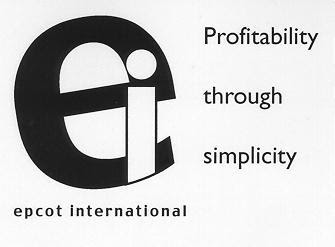Mergers and acquisitions in
Pharma like any other M&A have consequences. They are:
· Higher Revenue
· Increased Profits
· Loss of jobs
· Lot of money for some in “C and S” suites
Generally the first three happen
due to economies of scale and elimination of redundancies. The last happens due
to contractual obligations.
Generally economies of scale
and better manufacturing technologies can be easily incorporated to improve the
overall business. In pharma M&As incorporation of better manufacturing and
related practices is not easy. In brand mergers it is impossible due to short
patent life. For the generics after the low hanging fruits have been collected
companies have to sort out their product portfolio. Companies that cater
singular products [single active formulated in different doses] have to decide
the future course. If they want to increase the market share, they have two
options.
1.
Stay with the
existing practices irrespective of their efficiencies or inefficiencies. This
will depend on their market position.
2.
Capitalize on
economies of scale and use better and efficient technologies to expand their
market share. Upside would be higher revenue due to larger market and higher
profits. Downside would be the investment (unknown) necessary to ensure the
product meets accepted efficacy and performance. Process economics can justify
their course.
I do not believe that patients
in either case will see much or any reduction in their drug costs. Most likely
the drug costs after the mergers go up and that is especially true for the
brand drugs. We have seen that in the recent case of HCV.
Focus of the pharma
companies is to maximize their revenue and profits while suggesting that their
more expensive drugs are better for the disease. A recent opinion by Dr.
Jeremy A.
Greene (1) is in an interesting and excellent overview about
drug strategies and pricing. Reformulation of existing drugs through patent
extensions and charging higher
prices (2) is another strategy. I just wonder why in the name of better drug,
which may be no better or marginally better than the existing drugs, companies
are charging higher prices. It is obvious revenues and profits are the focus
rather than the patient. Mutually
subsidized healthcare systems really camouflage the real sales prices. Higher
drug price are justified for longevity and convenience but generally patients
are the losers as they cannot afford their higher priced drugs.
Recent merger frenzy involving Teva, Mylan and
Perrigo has an interesting cast
of CEOs (3). They are not pharma bred. Their demeanor during their consulting
careers has been to maximize profits and shareholder values. They could be the
“creative destructionists” pharma has needed to move from “regulation
centricity” to “process centricity” which would bring significant change in the
generic pharma model.
Generics have the best opportunity to increase their
revenues by including almost 1.4 billion people, due to lower drug prices, in
their patient base through the use of better manufacturing technologies and
business practices. Economies of scale and “process centricity” could release
pharma from the regulatory guideline and directive shackles that have impeded
“operational excellence” in pharma. If they venture out to include
“manufacturing excellence” they could save as much as $200 billion dollars. Using
the current estimated monies needed to develop and commercialize a new drug
could result in the development of one hundred new drugs. With this money
developers for the new drugs could be busy for the next forty years and may
save many jobs.
May be Pharma’s movers and shakers will change the
generic landscape forever.
(1) http://www.forbes.com/sites/matthewherper/2015/04/23/when-old-drugs-are-made-new-again/
(2) http://www.bloomberg.com/news/articles/2014-09-16/actavis-sued-by-new-york-attorney-general-over-namenda-switch
(3) http://www.wsj.com/articles/meet-pharmas-newest-movers-and-shakers-1429750065
(1) http://www.forbes.com/sites/matthewherper/2015/04/23/when-old-drugs-are-made-new-again/
(2) http://www.bloomberg.com/news/articles/2014-09-16/actavis-sued-by-new-york-attorney-general-over-namenda-switch
(3) http://www.wsj.com/articles/meet-pharmas-newest-movers-and-shakers-1429750065
Girish Malhotra,
PE
EPCOT
International
